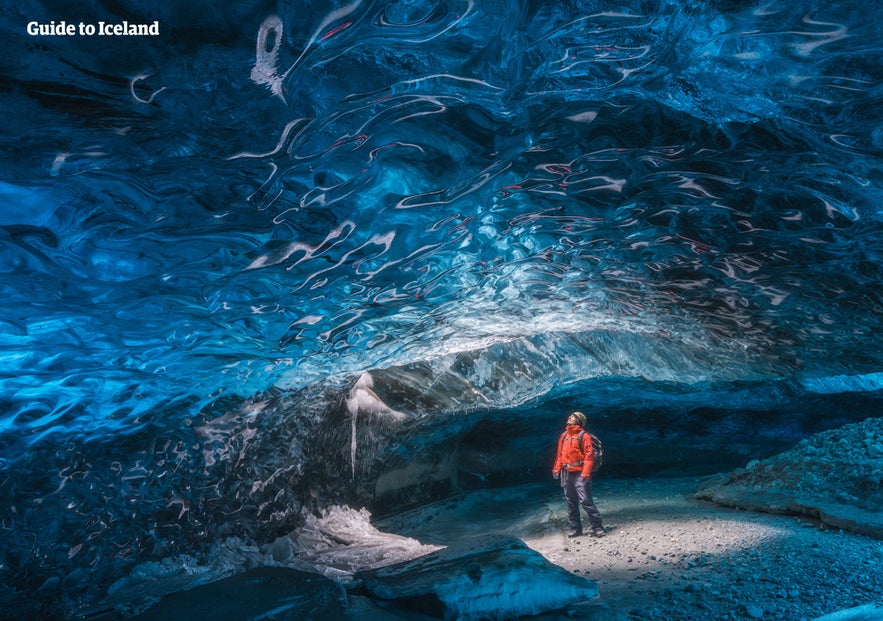
What are the major do’s and don’ts for travel in Iceland? How can you make the most out of your Iceland experience? What steps can you take to avoid the common mistakes of past travelers? Read on to uncover the most important things to know before your trip to Iceland!
Iceland is a land of extraordinary contrasts and unforgettable experiences. With its towering glaciers, geothermal wonders, and otherworldly landscapes, it’s no wonder Iceland tops so many travel bucket lists.
Why You Can Trust Our Content
Guide to Iceland is the most trusted travel platform in Iceland, helping millions of visitors each year. All our content is written and reviewed by local experts who are deeply familiar with Iceland. You can count on us for accurate, up-to-date, and trustworthy travel advice.
While Iceland's beauty is undeniably captivating, traveling here comes with its own set of quirks and challenges. Whether you're planning a spontaneous short trip or considering curated vacation packages, knowing the essential dos and don’ts can help you avoid common pitfalls and ensure your trip is as memorable for the right reasons as it is for the scenery.
As you prepare to chase the northern lights, explore the charming Reykjavik, or embark on self-drive tours around the Ring Road, knowing what to expect will help you navigate Iceland like a seasoned traveler. From packing tips to local etiquette, every decision can enhance your experience or hinder it.
Keep reading to discover the top 5 dos and don’ts that every traveler visiting Iceland should know!
- See also: Sustainable Tourism in Iceland
- Find out What To Pack for Iceland for All Seasons
Top 5 Do's When Visiting Iceland
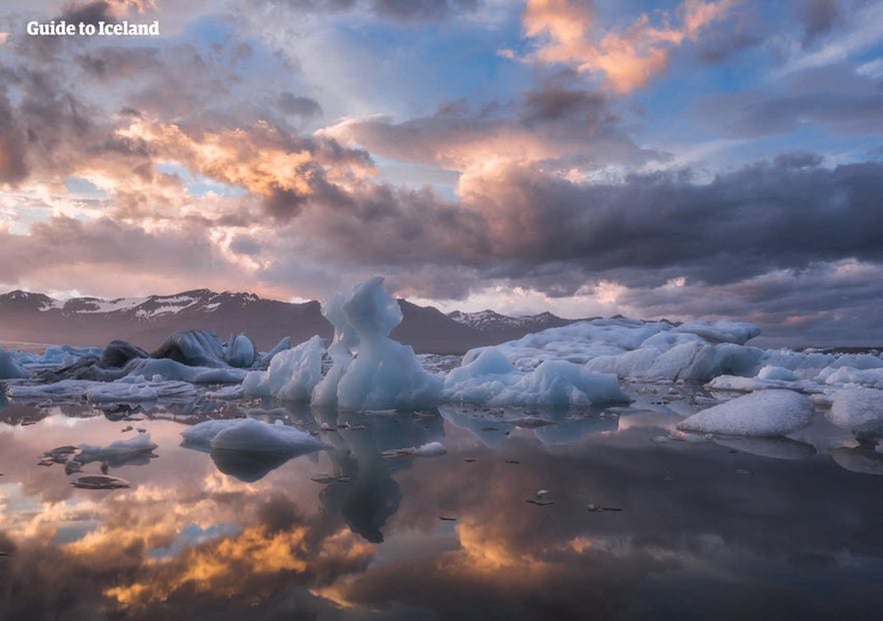
Make the most of your trip with these top 5 things to know before visiting Iceland. From planning your adventures to discovering must-do experiences, these tips will help you avoid common pitfalls in Iceland and make the most of your vacation.
5. Do Plan Your Itinerary Before Heading Out

If, during your time in Iceland, you somehow happen to find yourself in the company of an Icelandic Scout troop, you might hear the declaration “Ávallt viðbúinn!” which means, “Always Prepared!"
Travelers would do well to keep such wisdom in mind before setting out from Keflavik Airport, but that means one word: organization.
In other words, one of the most important things to know before visiting Iceland is what you want to see and do. Last-minute preparation can lead to unnecessary stress and potentially tarnish your holiday if something important gets overlooked.
A little research on Iceland’s major attractions and the logistics of your itinerary will go a long way in ensuring a smooth and enjoyable trip.
- Check out the Guide to the Icelandic Krona (with a currency converter!)
- Read more: The Ultimate Guide to Driving in Iceland

Start by deciding what kind of experience you want. Are you more interested in Iceland’s natural wonders, like waterfalls, glaciers, and volcanoes? Or is the cultural side calling with Reykjavik’s museums, art galleries, and local cuisine? Knowing your priorities will help shape your trip.
Also, consider the regions you’ll visit and how long it takes to travel between them. Although Iceland looks small on a map, driving times can be longer than expected due to weather, road conditions, or the urge to stop for spontaneous sightseeing.
- Find the Best Advice For Renting a Car in Iceland
- See also: Best Guide to Rental Car Sizes in Iceland

Another crucial thing to know before going to Iceland is what type of car you need. For example, if you're planning to visit the Highlands, you’ll need a proper 4x4 rental vehicle, and this is only possible during the summer.
Understanding such details in advance is key to making the most of your time in Iceland.
The number of days you have will also shape your itinerary. By researching Iceland's many waterfalls, glaciers, coastlines, and activities in advance, you can determine how much time you’ll need to fully enjoy your trip. The more prepared you are, the smoother and more fulfilling your Icelandic adventure will be!
- Discover How Many Days to Spend in Iceland
- See also: When Is the Best Time to Visit Iceland?
4. Do Submit a Travelplan

Iceland is well known for its dramatic landscapes and equally dramatic weather. That’s why safety should always be top of mind, especially if you’re planning to hike in remote areas or travel during the winter months.
It's a good rule of thumb to submit a travel plan on the Safetravel website before going on hikes, driving into the Highlands, or heading out for potentially risky activities.
Safetravel is run by the Icelandic Search and Rescue, and this service helps track travelers in case of emergencies. You simply fill out a form with details about your trip, including your route, destinations, your companions, and so on.
It only takes a moment, and when it's been submitted, Safetravel can monitor your trip and alert search and rescue teams if you don’t return as scheduled. This can be life-saving if something goes wrong, like if you get injured, lost, or encounter unexpected weather changes.
Safetravel is also a good resource for staying informed about any potential risks and dangers in Iceland. We highly recommend downloading their app and signing up for the safety alerts to stay informed during your visit.
- Learn more: Hiking in Iceland: A Complete Guide to the Best Hikes and Trails
- See also: The Weather & Temperature in Iceland
3. Do Choose Cheaper Groceries

Anyone planning a trip to Iceland has probably heard about its potential for high costs—which makes knowing where (and how) to shop one of the most valuable tips for travelers.
Expenses can quickly add up when it comes to food. While it's easy to be surprised by high prices, knowing where to go shopping for groceries in Iceland can make a big difference. Avoid convenience stores like 10-11 or Krambudin, as these have astronomically higher prices. Instead, opt for stores where locals do their shopping for more affordable options.
A solid choice for your grocery needs is Kronan, one of the most popular grocery stores in Iceland, where you'll find everything you need. They have a wide selection of quality items at much lower prices, with an emphasis on eco-friendly products. It's also the go-to place for vegan options in Iceland.
- Also, check out the Vegan & Vegetarian Guide to Reykjavik
 Whether you're getting a light snack for a hike, picking up the deodorant that you forgot to bring with you, or cooking a full meal, you'll find what you need in Kronan. There are multiple locations around the Capital Region and around the country, helping you stretch your budget further and allowing you to enjoy more of what Iceland has to offer without overspending.
Whether you're getting a light snack for a hike, picking up the deodorant that you forgot to bring with you, or cooking a full meal, you'll find what you need in Kronan. There are multiple locations around the Capital Region and around the country, helping you stretch your budget further and allowing you to enjoy more of what Iceland has to offer without overspending.
2. Do Shower Before Entering The Pool

Relaxing in Iceland’s geothermal pools is a beloved pastime for locals, whether in the modern facilities of Reykjavik or in the smaller, remote pools scattered across the countryside. Almost every town has its own pool, as swimming is a mandatory part of the Icelandic school system. This means that Icelanders grow up in the warm water, and enjoying a soak remains a popular activity for all ages.
For visitors, experiencing these geothermal pools is a must. It offers a unique insight into Icelandic culture, where bathing is not just about relaxation but a social activity. It’s common for people to catch up with friends and family or even strike up conversations with strangers in the pools.
Unlike busy city bars, the pools provide a calm, communal space to meet locals and relax. Some pools even have beautiful views of mountains or coastlines!
There are plenty of public pools to choose from, but if you want an even more unique experience, go for places like the Blue Lagoon, Sky Lagoon, or Hvammsvik Hot Springs, where this bathing culture has been elevated even more.
No matter where you go, there is one important thing you need to know — you always have to shower without your swimwear before entering swimming pools and lagoons in Iceland.

Properly showering fully nude before entering a shared bath is not just a basic courtesy to your fellow swimming pool guests but a full-on rule. In larger swimming pools, you may even have changing room attendants who make sure that this rule is followed.
If this is something that makes you uncomfortable, there are a few public swimming pools that offer shower stalls, but this is the exception to the rule. Locations that are more frequented by travelers, such as the Blue Lagoon and Sky Lagoon, usually have shower stalls for privacy, but you'll still have to do a full shower.
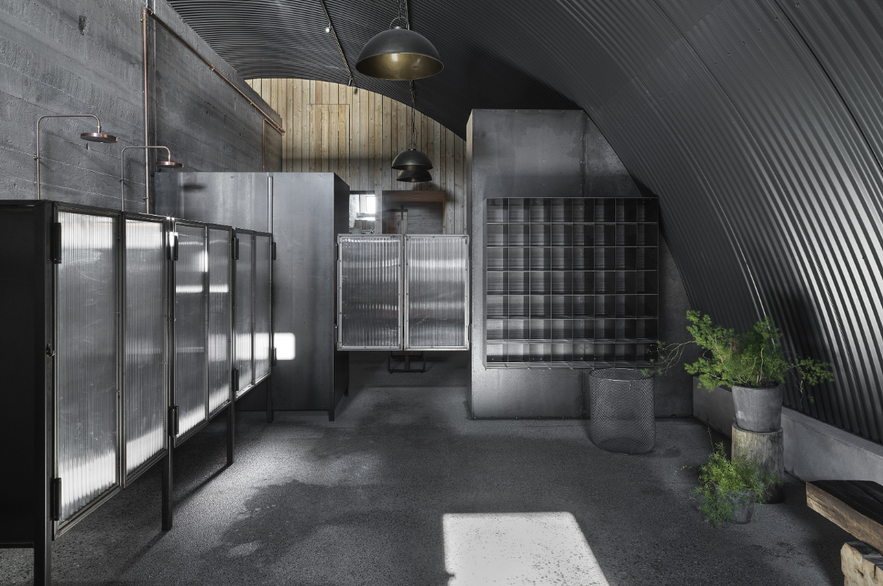
Locations like the Blue Lagoon, Sky Lagoon, and Hvammsvik Hot Springs (pictured above) usually have private shower stalls.
If you go straight to the pool without showering, dry hair and all, you can expect locals to judge you the whole time and you may get scolded by pool employees. So, if you'd like to experience this fantastic part of Iceland, just follow the rules, respect the culture, and wash properly before entering.
1. Do Take A Unique Tour
Traveling to Iceland can be magical, but it's the activities you choose that will define your experience. Thankfully, the experiences to choose from are truly diverse.
You can find tours that last everywhere from one hour to full days or even more, so you can really customize your dream vacation.
Experience the vast Icelandic glaciers with glacier hiking or ice caving, tackle the dramatic mountains with hiking tours, or enjoy nature with horse riding tours. You can even soar across remote landscapes with once-in-a-lifetime helicopter tours!
The tours you choose to take will provide a unique perspective on Icelandic nature. For instance, when visiting Thingvellir National Park, the best way to experience the clarity of the glacial Silfra Fissure is with snorkeling tours and scuba diving adventures.

Top Unique Tour Experiences
Given the diverse landscapes and geography in Iceland, there's no shortage of unique tours and adventures. Some of the many unique tour experiences you can have during your time in the country include:
-
The Crystal Blue Ice Cave Tour in Vatnajokull Glacier - Starting from Jokulsarlon Glacier Lagoon — Venture into the depths of a mesmerizing ice cave and see stunning blue ice on this unforgettable journey.
-
The Skaftafell Glacier Hiking Tour | Easy & Safe Adventure on Europe’s Largest Ice Cap — For those who want an easier hiking experience, this safer tour is a great way to explore one of Iceland's famous glaciers.
-
Blue Lagoon Comfort Ticket — After a long day, soak in the relaxing waters of the iconic Blue Lagoon with this comfort ticket.
-
The Jokulsarlon Glacier Lagoon Boat Tour — During this exciting tour, you'll have a chance to experience icebergs up close at Jokulsarlon Glacier Lagoon.
-
The Whale Watching Tour from Reykjavik — Have a chance to see whales and other marine life in the gorgeous Faxafloi Bay with this whale-watching adventure.
You can trust that your guides in Iceland are knowledgeable, passionate, experienced, and qualified in their fields.

For a different adventure, gain insight into Iceland’s geological history by exploring ancient lava caves or descending inside the Thrihnukagigur Volcano, where you can see magnificent colors imprinted into the walls of the gigantic magma chamber.
You can trust that your Icelandic guides will be knowledgeable, passionate, experienced, and qualified in their activity, as well as in first aid. This ensures that tours in Iceland are as safe as possible and is one of the main reasons why it is forbidden to try and partake in certain activities without a guide present. Glacier hiking, for example, involves a thorough awareness of the terrain and knowing the locations of hidden crevasses, thin ice, and gorges.
It's easy to fit a unique tour experience into your itinerary as there's so much to choose from. Whether you're staying in Reykjavik accommodations or looking for self-drive activities, you're sure to find something exciting for your time in Iceland.
Bonus: Do Take Advantage of Discounts and Offers To Save Money
Traveling to Iceland can be expensive, but there are plenty of ways to stretch your budget without sacrificing the experience. We advise using the Guide to Iceland VIP Club. Exclusive to Guide to Iceland customers, this club provides access to incredible discounts and special offers at restaurants, bars, and stores throughout the country.
With the VIP Club, you can enjoy savings on everything from traditional Icelandic meals to unique souvenirs, making it easier to indulge in the best Iceland has to offer. Not only does this help you stay within budget, but it also allows you to experience Iceland more fully while enjoying perks unavailable to most travelers.
- See more: 19 Tips on How to Save Money in Iceland
Top 5 Do Not's When Visiting Iceland

Now that we've gone over what you should do in Iceland, what are some of the don'ts? Read on for more insight on what not to do during your trip to Iceland!
5. Don't Ignore Local Warnings

A top "don't" when visiting Iceland is ignoring local warnings, whether they come in the form of safety signs or weather alerts. Iceland’s landscapes, while stunning, can also be unpredictable and dangerous if proper precautions aren’t taken.
One of the most famous examples of this is Reynisfjara Beach, known for its black sand and striking basalt columns. As you walk from the parking lot to the beach, you'll pass by warning signs, warning lights, and lifebuoys, which are all there for a reason.
Reynisfjara Black Sand Beach is known for its powerful "sneaker waves" that can easily catch visitors off guard and drag them into the ocean. It’s crucial to stay a safe distance from the water and follow the guidance provided on the signs.
Unfortunately, it's way too common to see people ignoring these warnings and risking their lives just for some photos!

Photo from Flickr, Creative Commons, by Mark Steele.
Similarly, weather in Iceland can change rapidly and create hazardous conditions, especially in remote areas or during outdoor activities like hiking and driving.
Always check the Icelandic weather forecast and heed any warnings about severe conditions, such as storms or high winds, before setting out. The Safetravel website and app are also a great resource to stay informed!
Iceland has a weather warning system, which makes it pretty easy to understand when it's safe to travel. It's uncommon to see warnings in summer, but it's important to know about them if you're planning winter self-drive tours.
The system includes three colors: yellow, orange, and red.
-
A yellow warning signifies weather that may disrupt travel or outdoor activities, and people should stay updated. Avoid driving if possible.
-
An orange warning means more dangerous conditions are expected, such as very high winds, so find things to do indoors and only drive if absolutely necessary.
-
Finally, red warnings are very uncommon, but they're the most serious, indicating extreme weather conditions that can pose significant risks to safety. During a red warning, it's crucial to stay indoors and avoid travel.
By paying attention to local warnings and respecting the natural environment, you can avoid unnecessary risks and ensure your trip to Iceland remains safe and enjoyable.
Additionally, most hotels and tour providers will take these warnings into consideration. Don't be too worried about your bookings because ignoring these warnings can lead to dangerous situations that are entirely avoidable!
- Check out the Top 10 Apps for Traveling in Iceland
4. Don't Be Afraid to Try Icelandic

Icelanders are generally pretty language-savvy. Not only do they have an incredible tradition of oral and written storytelling, from the ancient Icelandic Sagas to Halldór Laxness' "Independent People," but most speak fluent English, with some also fairly proficient in Danish and other European languages.
The fact that most Icelanders speak English makes it a really easy country to visit. Asking for directions or advice is simple, as is ordering food and freely chatting with the Icelanders you meet. They are, however, always happy to hear someone making an effort, even if it's just with a simple "góðan daginn" and "takk" ("good day" and "thank you")!
Before traveling, it's always a good idea to look up some useful Icelandic phrases. Here are some simple phrases that can be good to know!
"My name is" ... Ég heiti ...
"I'm from" ... Ég er frá ...
"Hello" ... Halló ...
"Have a nice day" ... Eigðu góðan dag ...
"Please say that again" ... Gætirðu sagt þetta aftur? ...
"How much is this?" ... Hvað kostar þetta? ...
"Thank you" ... Takk / Takk fyrir ...
Generally speaking, the Icelandic language has remained relatively unchanged for over a thousand years, and the modern Icelandic language resembles Old Norse in many ways.
As it has quite a small group of speakers in the grand scheme of things, the language is considered at risk from outside influence, especially English, so speaking a bit of Icelandic is always appreciated!
- Learn about the Icelandic Alphabet and Language Basics
- See also: Icelandic Proverbs & Sayings
3. Don't Just Stay in Reykjavik

The Icelandic South Coast has some incredible locations.
While Reykjavik is a lively city with plenty of great restaurants, shops, and museums, it’s only a small part of what Iceland has to offer. To truly experience Iceland, you need to venture beyond Reykjavik to the incredible countryside.
Areas like the Golden Circle and the South Coast have some of Iceland's most famous natural attractions and can easily be explored with day trips from Reykjavik. If you have the benefit of an affordable rental car, however, it opens up a world of exploration!
Just outside Reykjavik, you can see iconic sights like the Seljalandsfoss and Skogafoss waterfalls, the famous black sand beaches of Reynisfjara, and the Jokulsarlon Glacier Lagoon. You can easily spend multiple days discovering all that the region has to offer.
- Check out the Ultimate Guide to Iceland's South Coast
- See also: The Ultimate Guide to Iceland's Golden Circle
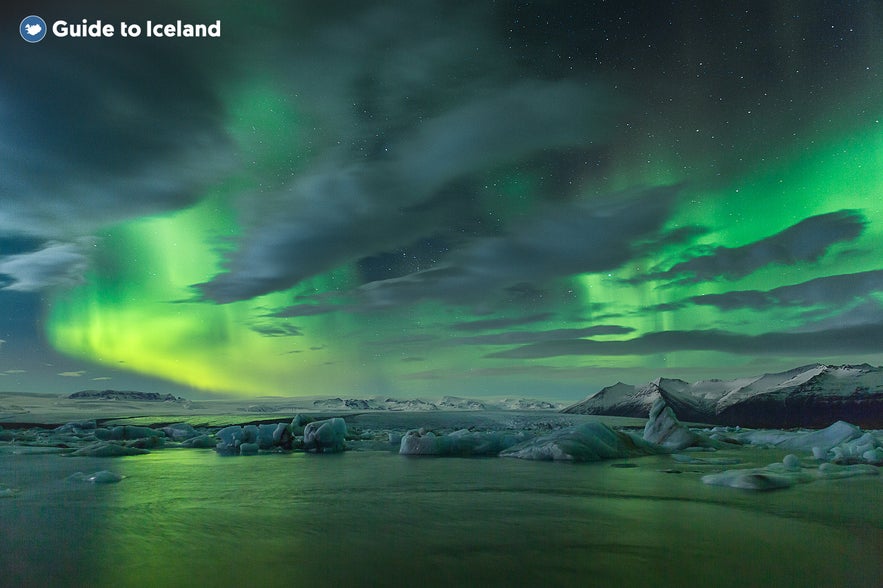
Jokulsarlon glacier lagoon is beautiful year-round.
For those looking for a quieter escape, Snaefellsnes tours are the perfect choice. The Snaefellsnes Peninsula is often called "Iceland in Miniature" due to its diverse landscapes, and you'll see beautiful lava fields, fishing villages, and the iconic Snaefellsjokull Glacier during a visit.
The Westfjords provide the perfect place to be alone with nature, as its dramatic, untouched landscapes, with towering cliffs, waterfalls, and wildlife, tend to be overlooked by visitors. Hiking opportunities are endless, with trails that take you through some of the most off-the-beaten-path landscapes in Iceland.
- Check out the Top 16 Things to Do on the Snaefellsnes Peninsula
- See more: The Ultimate Guide to the Westfjords of Iceland

Dynjandi is a magnificent waterfall in the Westfjords.
In North Iceland, you'll find Akureyri, a charming town surrounded by the beautiful Eyjafjordur Fjord. It's a short drive away from the Godafoss Waterfall and the incredible Lake Myvatn.
The Lake Myvatn area offers a surreal landscape filled with volcanic craters, geothermal hot springs, and unique lava formations.
Don’t miss Husavik, a coastal town famous for fantastic whale-watching tours, the winding hiking paths of the Asbyrgi Canyon, or Dettifoss Waterfall, one of Europe's most powerful waterfalls, which are all part of the popular Diamond Circle route.
- Discover the Ultimate Guide to Iceland's Diamond Circle
- See also: 11 Must-See Destinations in North Iceland

Lake Myvatn is famous for its pseudo-craters and volcanic landscapes.
For a truly off-the-beaten-path adventure, the Eastfjords should not be overlooked. This region is known for its peaceful fjords, steep mountains, and coastal villages. It's also home to the stunning Hengifoss Waterfall, one of the tallest in Iceland, as well as Iceland’s largest forest, Hallormsstadaskogur.
The Eastfjords are perfect for hiking, with numerous trails that lead to untouched landscapes, remote beaches, and hidden waterfalls. East Iceland’s small fishing towns, like Seydisfjordur, Borgarfjordur Eystri, and Faskrudsfjordur, provide a charming escape while you explore.
- For more, check out the Ultimate Guide to Iceland's East Fjords
- See also: The Best Places to Visit in East Iceland

You can see the basalt columns of the Studlagil canyon when visiting East Iceland.
By heading out beyond the streets of Reykjavik, you’ll uncover the true diversity and beauty of Iceland. Each region has its own unique character and offers something different to discover, so don't just limit yourself to Iceland's capital!
Head out for adventure, explore iconic sights, and, if you can, travel the whole Ring Road. It's going to make your time in Iceland so much more incredible.
- See the Best Attractions by the Ring Road of Iceland
- See also: Top 5 Best Road Trips in Iceland (with full itineraries!)
2. Don't Skip Icelandic Food
Yes, you might spot "svid" (a boiled sheep’s head) or packets of dried fish in the supermarket, but don’t let that fool you! Iceland offers incredible culinary experiences, with many of the best restaurants in Reykjavik showcasing the best of Icelandic cuisine.

Photo from Fish Market, one of the best seafood restaurants in Iceland.
Fish is central to Icelandic cuisine, and the country’s long-standing fishing tradition ensures you’ll find some of the freshest and most unique seafood dishes. From beautifully prepared cod and Arctic char to rich lobster soups, Icelanders have perfected the art of fresh seafood.
You'll find plenty of delicious and original dishes in restaurants around Iceland. For a traditional experience, try "plokkfiskur," a hearty fish stew that has been a staple for generations. It's a regular and delicious weeknight dinner in Icelandic homes!
Customers of Guide to Iceland will enjoy the benefits of the VIP Club, which gives them special offers and discounts at many great restaurants around the country.
- Find the Best Seafood Restaurants in Reykjavik
- See also: Best Restaurants in Iceland

Icelandic lamb served at Apotek Kitchen + Bar in Reykjavik.
Icelandic lamb is another must-try, known for its tender, rich flavor thanks to the free-roaming sheep that graze on wild herbs and grasses across the island. Whether slow-cooked, grilled, or in a traditional Icelandic "kjotsupa" soup, the quality and taste of the lamb here are unmatched.
In fact, the Icelandic lamb received a Protected Designation of Origin from the European Union in 2023 for its unique qualities. It truly is one of the best things to try in Iceland, so take the first chance to do so during a visit!
- Read more: Icelandic Sheep: The Ultimate Guide
- See also: Best Steakhouse Restaurants in Reykjavik

For the more adventurous, there’s "hakarl," fermented shark that's often served with a shot of "Brennivin," Iceland's famous schnapps. Though it’s not for everyone, trying fermented shark is considered a rite of passage. It’s part of the "Thorramatur" food, served at a traditional winter feast of Icelandic dishes that celebrates the country’s culinary roots.
Whether you're indulging in fresh seafood, savoring the island’s famous lamb, or sampling traditional dishes, Iceland’s food scene is rich and diverse, with something for everyone. It's a fantastic way to get to know the local culture, so don't skip out on the food during a visit!
- Learn about Disgusting Food in Iceland
1. Don't Book Your Iceland Trip at the Last Minute!

It's pretty well established that Iceland is an expensive destination. However, one of the best ways to counteract high prices is to book early. This is especially true if you're planning to visit during summer, the high season in Iceland, as availability can fill up quickly!
This is why it's best to book your hotel in Iceland with good notice; the further ahead, the better. You will also have the best selection to choose from and will be able to really customize your dream vacation, no matter where you're planning to stay.
- Also, see the Best Hotels in Downtown Reykjavik

Similarly, rental cars are in high demand during the main travel season as summer self-drive tours are very popular in Iceland. Renting a car is the best way to explore Iceland’s famous Ring Road or venture into the Highlands, and booking early not only ensures you get the type of vehicle you need but will save you money as prices tend to rise closer to your travel dates.
This should be a main priority if you plan on renting a campervan and embarking on a camping trip.
You don't want to end up with something that will be uncomfortable or doesn't fit your needs because there are too few options left! Instead, book your car as soon as you have your plane tickets.
- Plan the Perfect Camping Tour Around Iceland
- See also: Camping in Iceland | All You Need to Know
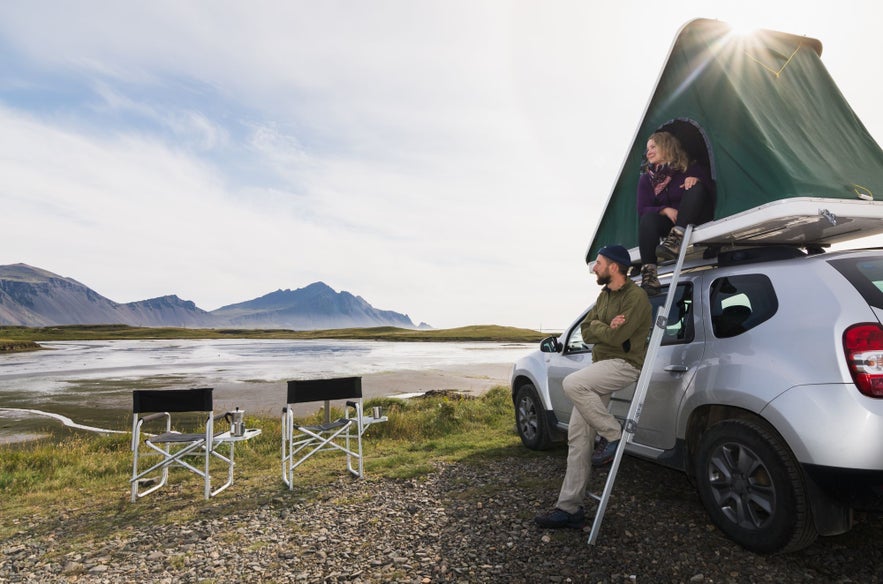
Speaking of plane tickets, that's another thing to consider. Flights to Iceland, while plentiful, will likely increase in price the longer you wait. To avoid higher costs and limited availability, it’s best to book your flight to Iceland well in advance.
Planning ahead allows for greater flexibility, better pricing, and peace of mind, ensuring you can fully enjoy your Iceland adventure without any last-minute stress.
You can easily find what you need on Guide to Iceland, as it's Iceland's largest travel marketplace. Compare all your options and prices, and book all you need in one place!
Other Things To Know Before Going to Iceland
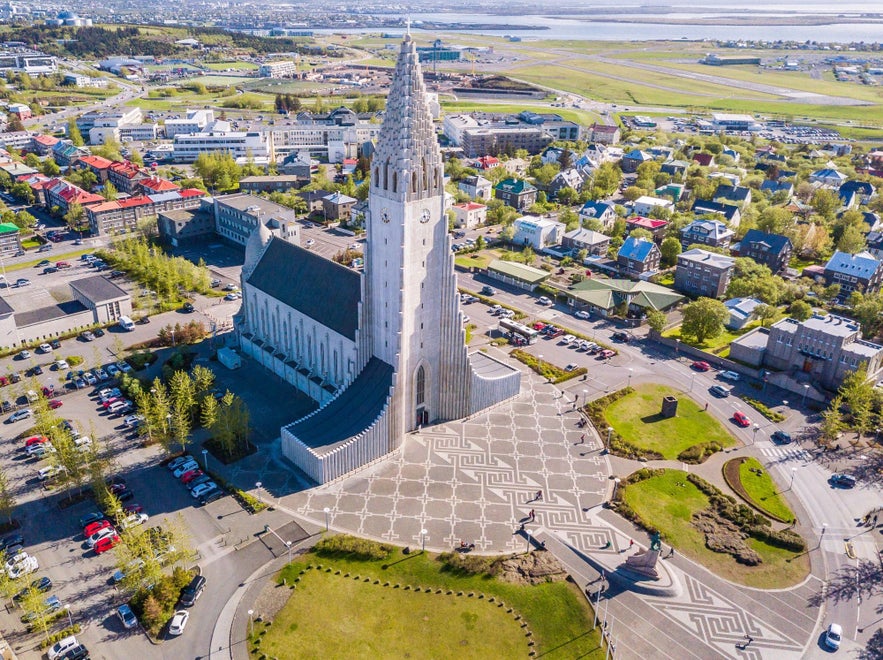
We've covered some of the main dos and don'ts of visiting, but here are some more things to know before your Iceland adventure!
Consider the Time of Year for Your Visit to Iceland

The time of year you visit Iceland will greatly affect your experience. Summer offers long daylight hours, making it ideal for road trips and hiking, while winter provides the magical opportunity to go hunting for the northern lights. However, winter also comes with shorter days and potentially difficult road conditions. Be sure to plan your activities accordingly based on the season you choose.
- Learn about Iceland's Seasonal Contrasts
- Also, check out the Best Itineraries in Iceland | Self-Drive Summer and Winter Adventures
Keep Your Iceland Itinerary Flexible
Iceland’s weather is known for being unpredictable, so it's important to keep your itinerary flexible. Sudden changes in conditions may require adjustments, but this flexibility also allows you to take advantage of spontaneous stops and activities!
Whether you come across a hidden waterfall, a scenic lookout, or a cozy cafe, having room in your schedule lets you fully embrace the unexpected beauty Iceland has to offer. Always have backup plans and stay updated on conditions through reliable sources like Safetravel.
Respect Icelandic Nature
Photo from the Environment Agency of Iceland. Off-road driving does irreversible damage to nature. These tire tracks will remain for decades and only get worse with time. Driving off-road will lead to very high fines for the driver.
Now, this may seem obvious, but it really does need a mention. Iceland’s landscape is fragile, and visitors should be mindful of the environment. Stick to marked trails when hiking to avoid damaging delicate ecosystems, and never drive off-road, as it will cause significant harm to the land. Respect wildlife and avoid disturbing animals like puffins or seals.
Don't Buy Bottled Water in Iceland
Iceland’s tap water is among the cleanest and purest in the world. There’s no need to waste money on bottled water, and it’s better for the environment. Simply bring a reusable bottle, refill it at taps along the way, and enjoy!
Do Not Feed the Horses in Iceland

Icelandic horses are an iconic part of the landscape, and you’ll often see them grazing near the roadside. While it might be tempting to approach and feed them, it's important not to. Icelandic horses usually have a special diet tied to how they are trained.
Feeding Icelandic horses anything outside of what their owners provide can make them temperamental and even dangerous, as they stop listening to their owners when they've been spoiled with treats for some time.
It's unfortunately too common to see people stopping on the side of the roads to pet and feed horses, so this is a real struggle for Icelandic horse farmers! Enjoy them from a distance or interact with them at designated farms or tours instead, where it’s safe and controlled.
Don't Litter
It should be obvious, but littering is one of the last things you should do during your trip. Iceland’s pristine landscapes are a big part of what makes it so magical, and trash disrespects it. If you're traveling through Iceland, help keep the wilderness untouched for others by taking your waste with you.
Do Bring Waterproof Clothing
Iceland weather changes quickly, and a sudden downpour is more common than you might expect. Dressing in layers with waterproof gear is one of the smartest Iceland travel tips to follow, especially for those planning on having outdoor adventures. Staying dry can make the difference between a miserable outing and a memorable hike during your trip to Iceland.
Don’t Worry About Tipping at Restaurants
Iceland does not have a tipping culture like the United States, meaning that leaving tips at restaurants is not expected or necessary.
Don't Be an Obstacle on the Road
Pulling over in the middle of the road to take photos can be dangerous, especially on narrow rural highways. As a result, it's important to always find a safe parking area before stepping out — this small act makes traveling Iceland's roads safer for everyone.
Do Download the Parka App
Using the Parka app helps you pay for parking easily and avoids fines in places like Reykjavik. Many locals and tourists alike rely on it as a go-to resource for navigating parking while traveling in Iceland.
Don't Race to See Everything
Trying to cram all the sights into one trip can lead to a rushed and stressful experience. Iceland tours are best enjoyed at a relaxed pace, so be sure to savor your time in Iceland instead of speeding from one landmark to another. Slowing down allows you to connect more deeply with the landscape and discover hidden gems that don't appear on every Iceland map.
With These Tips, You Can Make Your Iceland Adventure One to Remember
Traveling in Iceland is an unforgettable experience filled with stunning landscapes, unique culture, and endless opportunities for adventure. By keeping these top dos and don’ts in mind, you’ll be well-prepared to explore the best the country has to offer while staying safe and respecting local customs. Whether it’s booking in advance, being flexible with your plans, or knowing how to interact with Icelandic nature, a little preparation goes a long way.
Did you find these tips helpful for preparing an Iceland trip? Was any one of them a surprise? Are there any more do's and don'ts that deserve a mention here? Share your thoughts in the comment section below!


